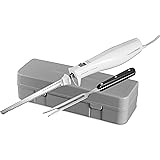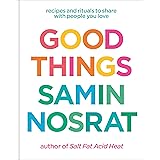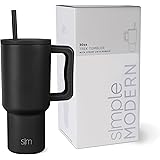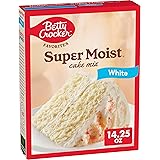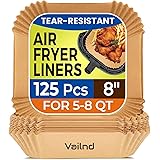In our fast-paced lives, finding the time to prepare truly wholesome and delicious meals, especially for breakfast, often feels like a luxury. Yet, the desire for nutritious, easy-to-make food that supports a healthy lifestyle is universal. This is where the beauty of simple, traditional recipes shines, offering a perfect blend of health and convenience. The video above masterfully demonstrates two such healthy and quick breakfast recipes that promise to revolutionize your meal routine, transforming mundane mornings into delightful culinary experiences. We dive deeper into these Indian vegetarian creations, exploring their health benefits, culinary versatility, and practical tips for perfect execution.
The Wholesome Power of Indian Grains and Legumes for Breakfast
Indian cuisine is renowned for its ingenious use of grains and legumes, harnessing their nutritional prowess to create dishes that are both nourishing and deeply satisfying. These breakfast recipes, featuring jowar (sorghum), rava (semolina), and moong dal (split green gram), are prime examples. They offer an excellent way to integrate complex carbohydrates, essential proteins, and a wealth of micronutrients into your diet right from the start of the day.
Jowar Rava Vegetable Cheela: A Fiber-Rich and Gluten-Friendly Start
The first recipe introduced in the video, a delightful Jowar Rava Vegetable Cheela, is a testament to how simple ingredients can yield extraordinary results. Jowar, or sorghum, is a powerhouse grain, often lauded for its impressive fiber content. Studies suggest that a single serving of jowar can provide a significant portion of your daily recommended fiber intake, which is crucial for digestive health and maintaining satiety. Furthermore, for those seeking gluten-free options, jowar naturally fits the bill, offering a nutritious alternative to wheat-based products.
In this cheela, jowar flour is combined with rava, which adds a pleasant texture and helps bind the batter. The addition of vegetables like onion, grated carrot, and capsicum not only infuses the cheela with vibrant flavors but also boosts its nutritional profile with vitamins, minerals, and antioxidants. A squeeze of lemon juice brightens the flavors, while a touch of asafoetida (hing) aids digestion, a common practice in traditional Indian cooking.
Achieving the perfect batter consistency is key here. As the video highlights, it’s essential to add water gradually, preventing the mixture from becoming too thin. Vegetables release their own moisture, so a thicker, more manageable batter is ideal for creating these fluffy pancakes. Baking soda, added just before cooking, works wonders to create a light and airy texture, making each bite incredibly soft and palatable.
Moong Dal Pancakes: Protein-Packed Perfection Without Leavening Agents
In contrast to the jowar-rava blend, the second recipe elevates the humble moong dal into a savory, protein-rich pancake. Moong dal is a superstar in the legume family, widely recognized for its high protein content and easy digestibility. For vegetarians, it’s an invaluable source of plant-based protein, essential for muscle repair, growth, and overall bodily functions.
The preparation begins with soaking moong dal for at least 15-20 minutes, a crucial step that softens the dal and makes it easier to blend into a smooth paste. This soaking process also enhances its digestibility, preventing any discomfort often associated with legumes. Blending the soaked dal with ginger and green chilies creates a flavorful base. The video’s method of quickly sautéing vegetables like sliced onion, grated carrot, and capsicum before adding them to the dal batter ensures they retain a slight crunch and their vibrant color, contributing to both texture and visual appeal.
What sets this particular moong dal pancake apart is its ability to remain wonderfully soft without the need for baking soda or Eno. This natural softness is a direct result of the dal’s inherent texture when blended correctly and cooked gently. The inclusion of a small amount of gram flour (chane ka aata) and rava helps bind the batter, while spices like turmeric, coriander powder, and a hint of fennel seeds (saunf) build a complex flavor profile that is both comforting and invigorating.
Mastering Flavor, Texture, and Cooking Techniques
The success of these healthy Indian breakfast recipes lies not just in their ingredients but also in the meticulous cooking techniques demonstrated. Each step, from tempering the spices to controlling the flame, plays a vital role in achieving the desired taste and texture.
The Art of Tempering and Seasoning
Tempering, or tadka, is a hallmark of Indian cooking, and it’s expertly employed in both recipes. For the jowar-rava cheela, mustard seeds (rai), cumin seeds (jeera), and white sesame seeds (safed til) are popped in hot oil, releasing their aromatic oils and nutty flavors. This creates a fragrant base that infuses the entire dish. Similarly, the moong dal pancake starts with a simple tempering of mustard seeds, cumin seeds, and asafoetida, setting a foundational layer of flavor for the vegetables.
Seasoning is also carefully balanced. Fresh coriander adds a burst of freshness, while lemon juice brightens the overall taste. The use of traditional spices like turmeric and coriander powder not only adds depth of flavor but also brings their own health benefits, such as anti-inflammatory properties from turmeric.
Achieving the Perfect Golden Brown
Cooking these pancakes to a perfect golden brown requires patience and a watchful eye. The video emphasizes cooking on a low flame initially, especially for the jowar-rava cheela, until the top layer dries out. This ensures that the interior cooks thoroughly without burning the exterior. Once the top surface is dry, a brush of oil and a flip allow the other side to crisp up beautifully on a medium flame. This method creates a pancake that is golden, crispy on the outside, and incredibly soft within.
For the moong dal pancake, a similar low-to-medium flame approach is advised. Spreading the batter gently by hand and allowing it to cook on one side before flipping ensures an even cook and a tender texture. The result is a pancake that holds its shape, is easy to flip, and develops a delightful color and texture on both sides.
Beyond Breakfast: Versatility for Any Meal
While these recipes are highlighted as ideal breakfast options, their versatility extends far beyond. Both the jowar-rava cheela and the moong dal pancakes make excellent choices for a light lunch, a quick dinner, or a nutritious snack. Their balanced nutritional profile makes them suitable for various meal occasions, offering a wholesome alternative to heavier, oilier foods.
Kid-Friendly & Tiffin-Ready
One of the most significant advantages of these healthy and quick breakfast recipes is their kid-friendly nature. Children often gravitate towards visually appealing and easy-to-eat foods. Cutting the cheelas into small pieces, as demonstrated, makes them perfect for little hands. The inclusion of finely grated vegetables is also a clever way to sneak in extra nutrition, especially for picky eaters. These pancakes hold up well, remaining soft even when cold, making them an ideal choice for school tiffin boxes or packed lunches. They offer a comforting and nourishing meal that parents can feel good about sending with their children.
Making these healthy and quick breakfast recipes a part of your routine is an easy step towards a healthier lifestyle. They prove that nutritious food doesn’t have to be bland or time-consuming. Instead, it can be bursting with flavor, incredibly satisfying, and remarkably simple to prepare, offering the best options for tiffin, breakfast, and any meal.



